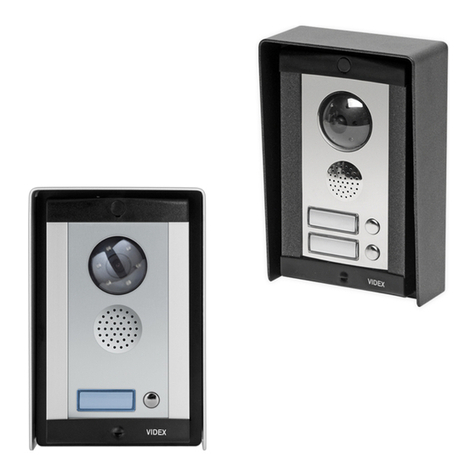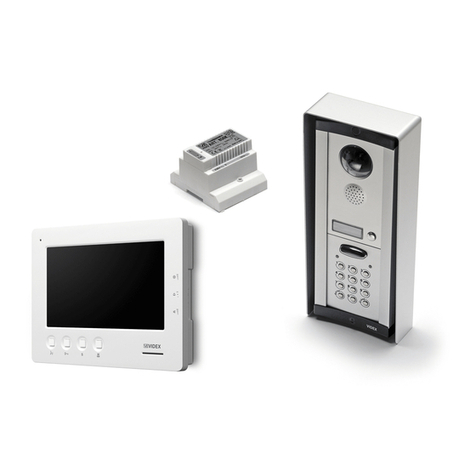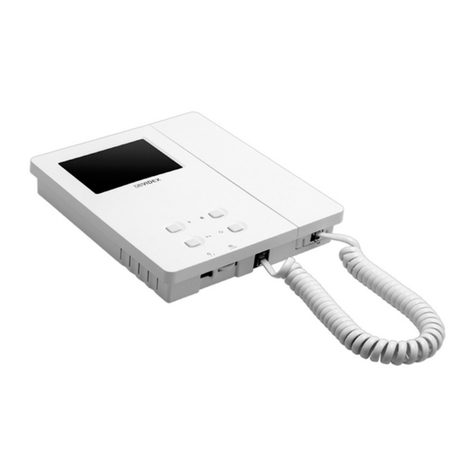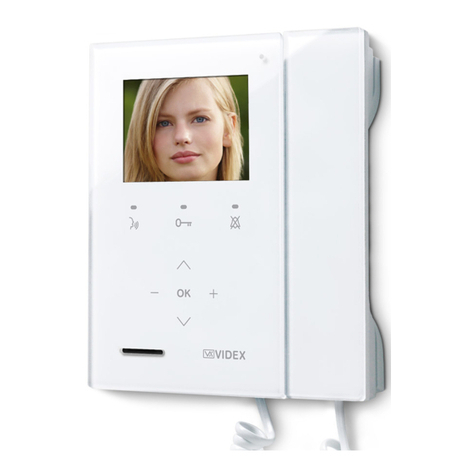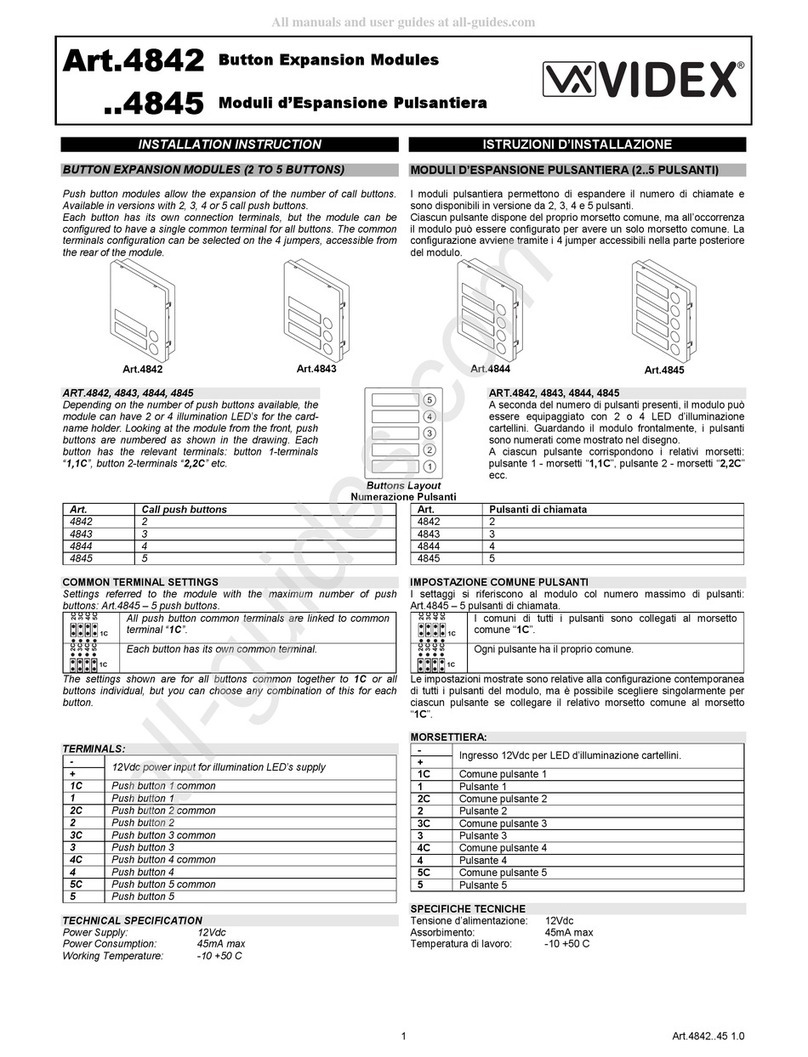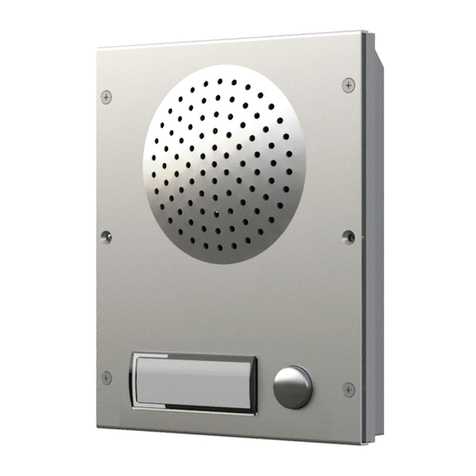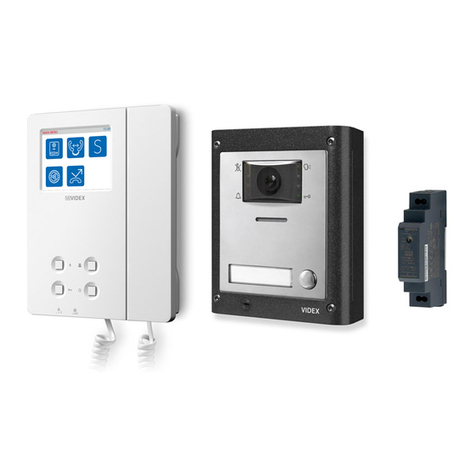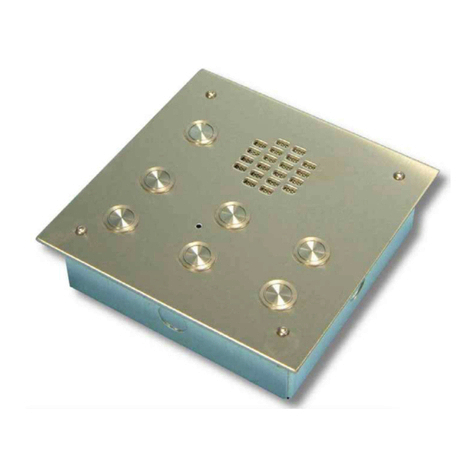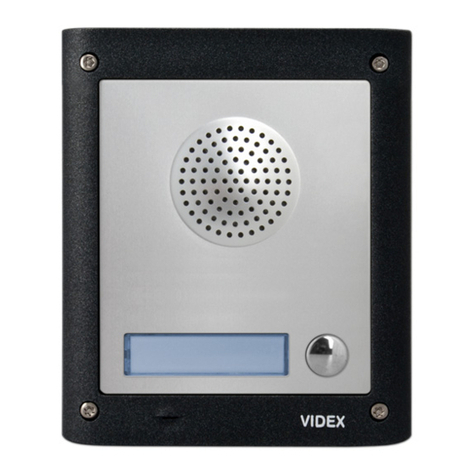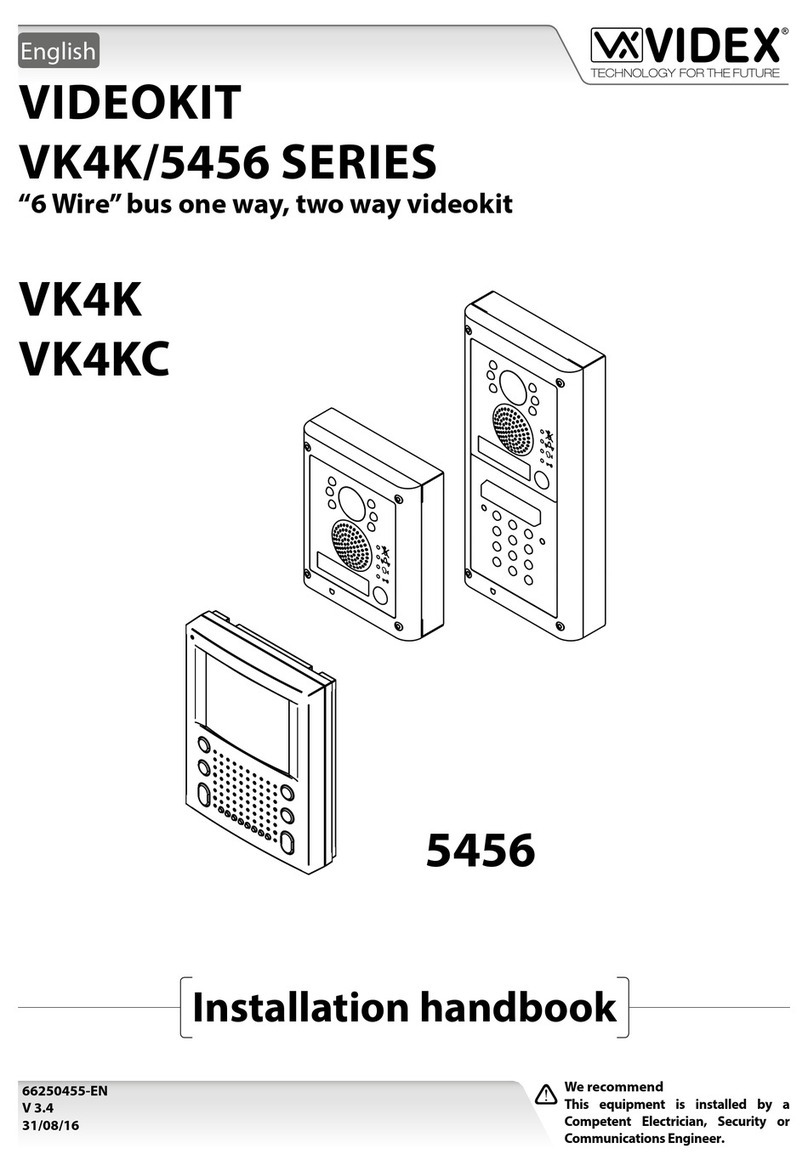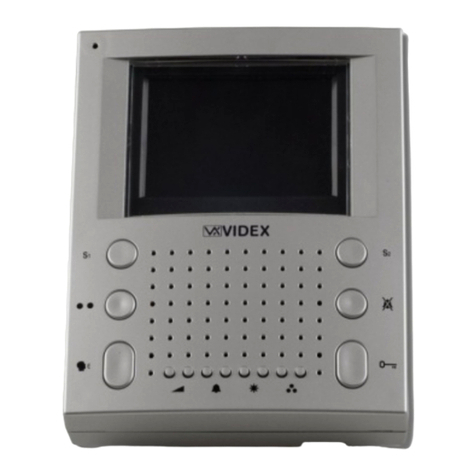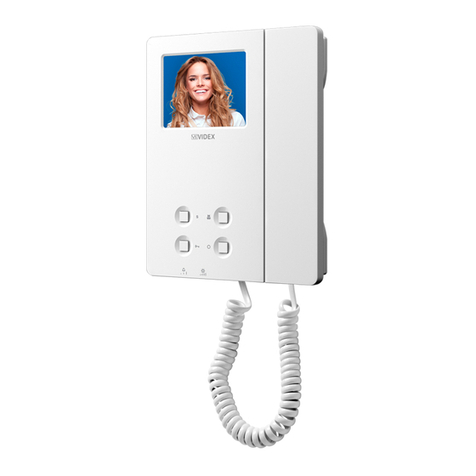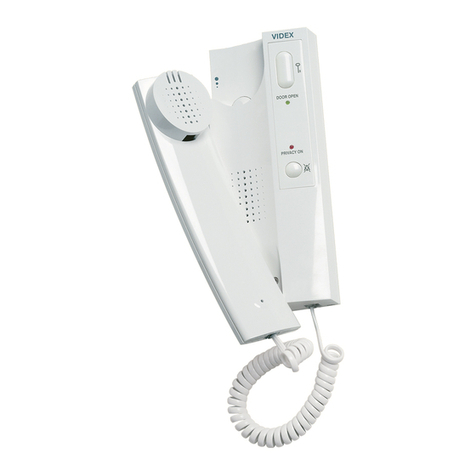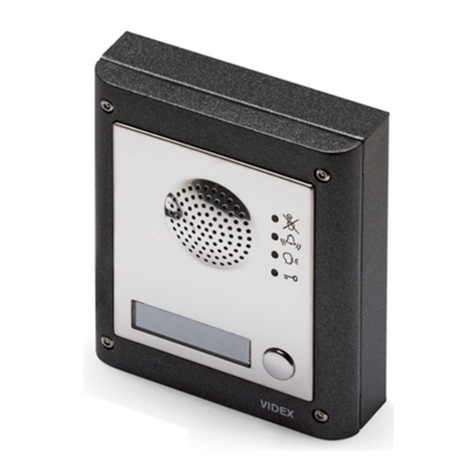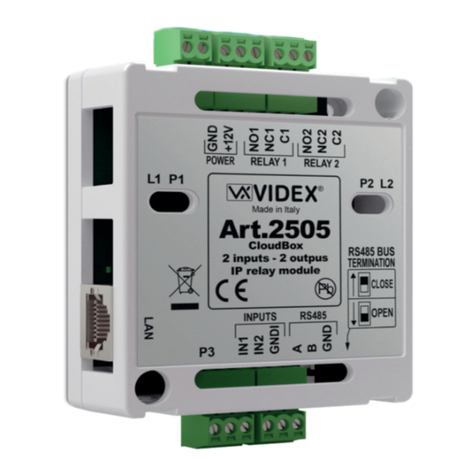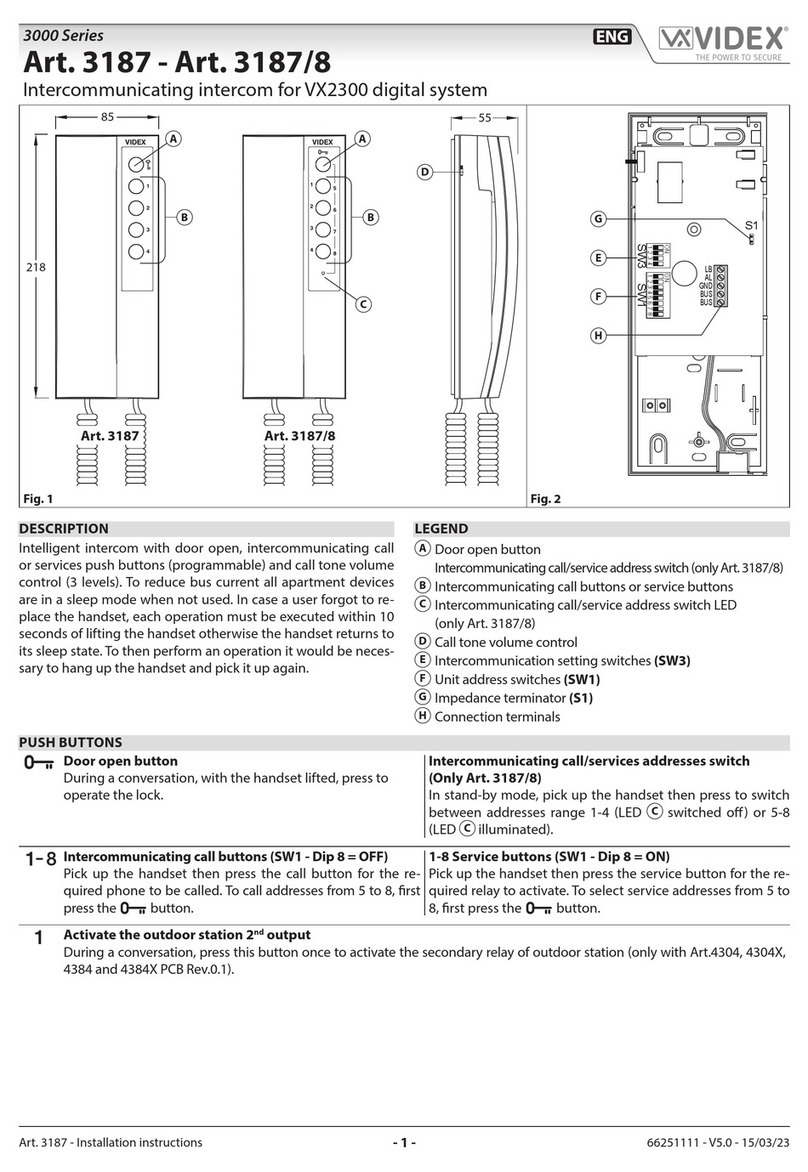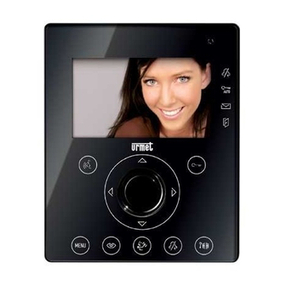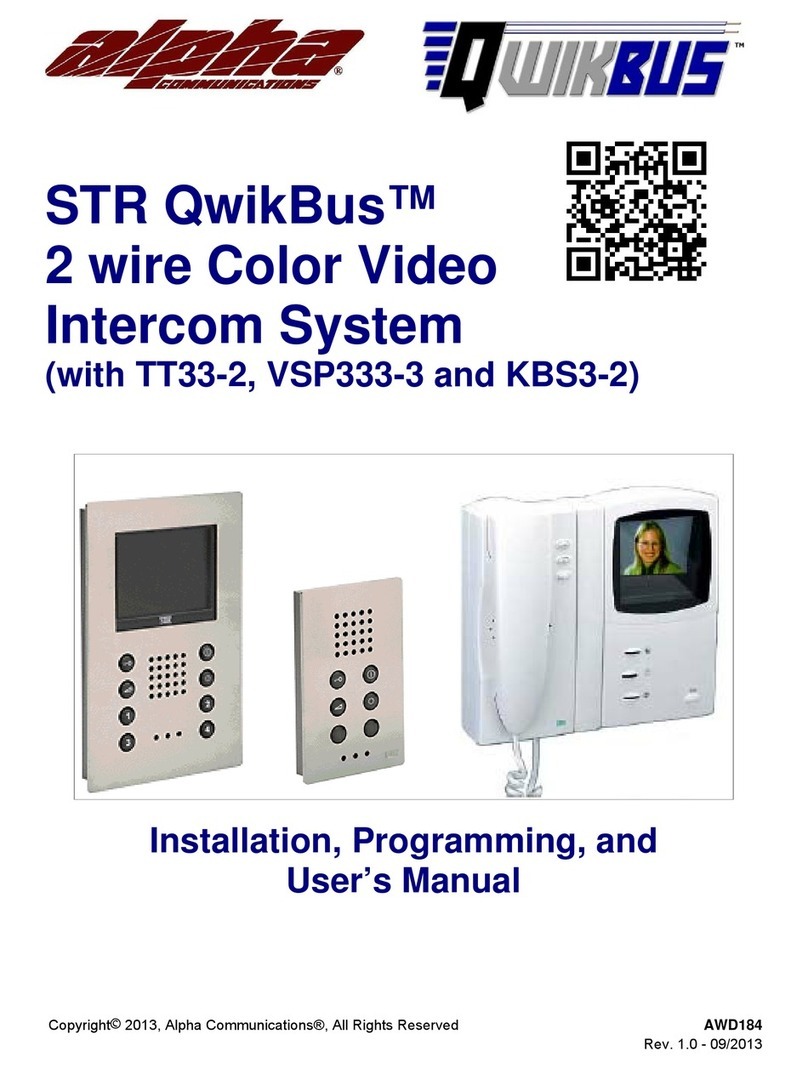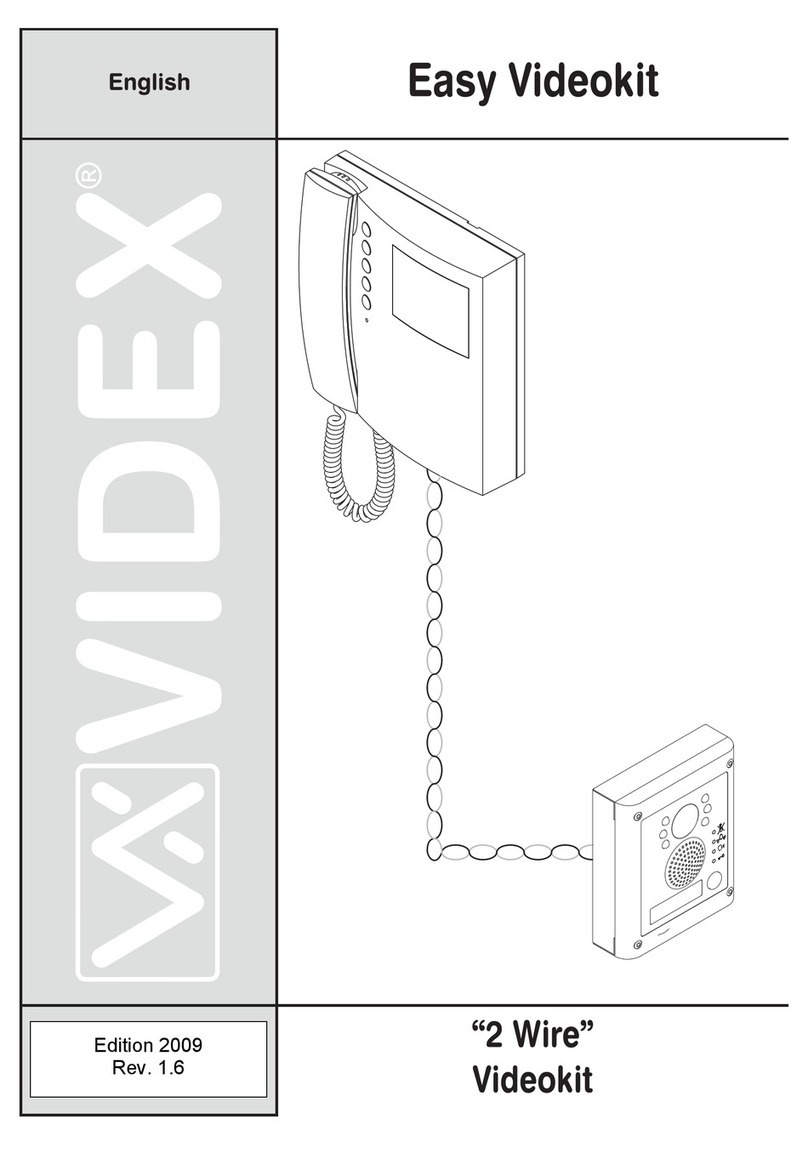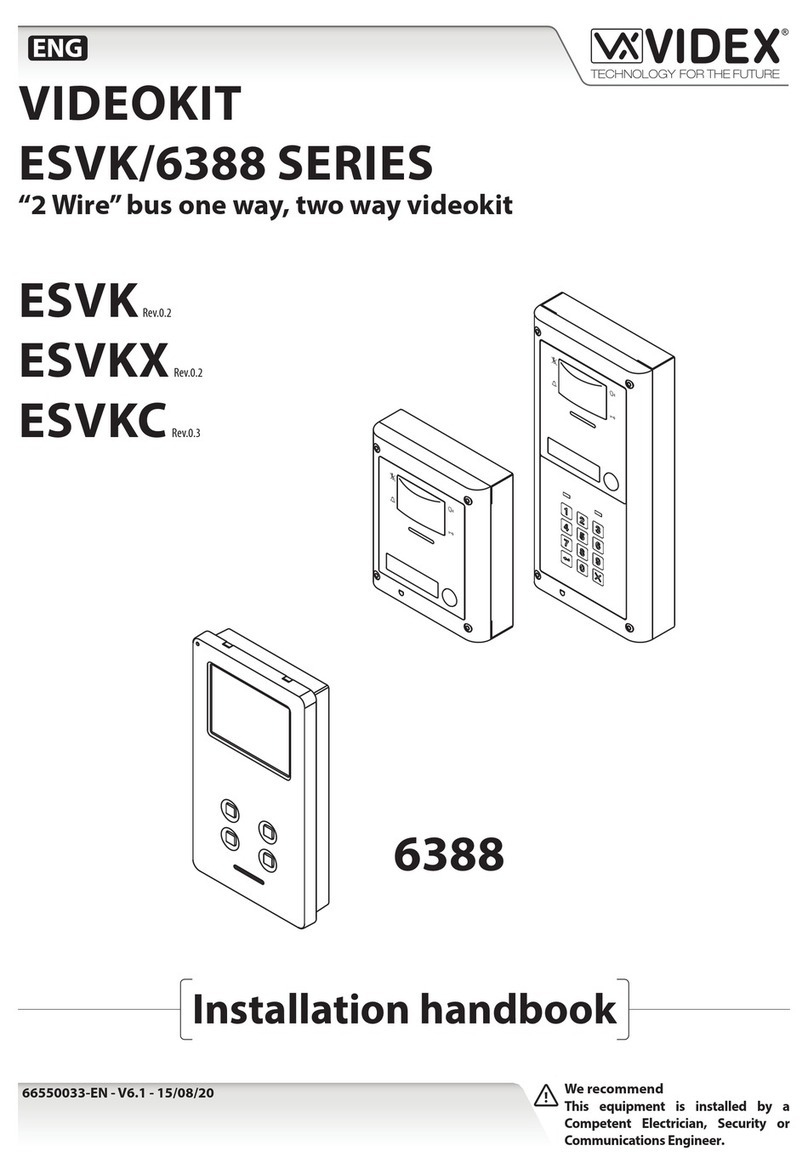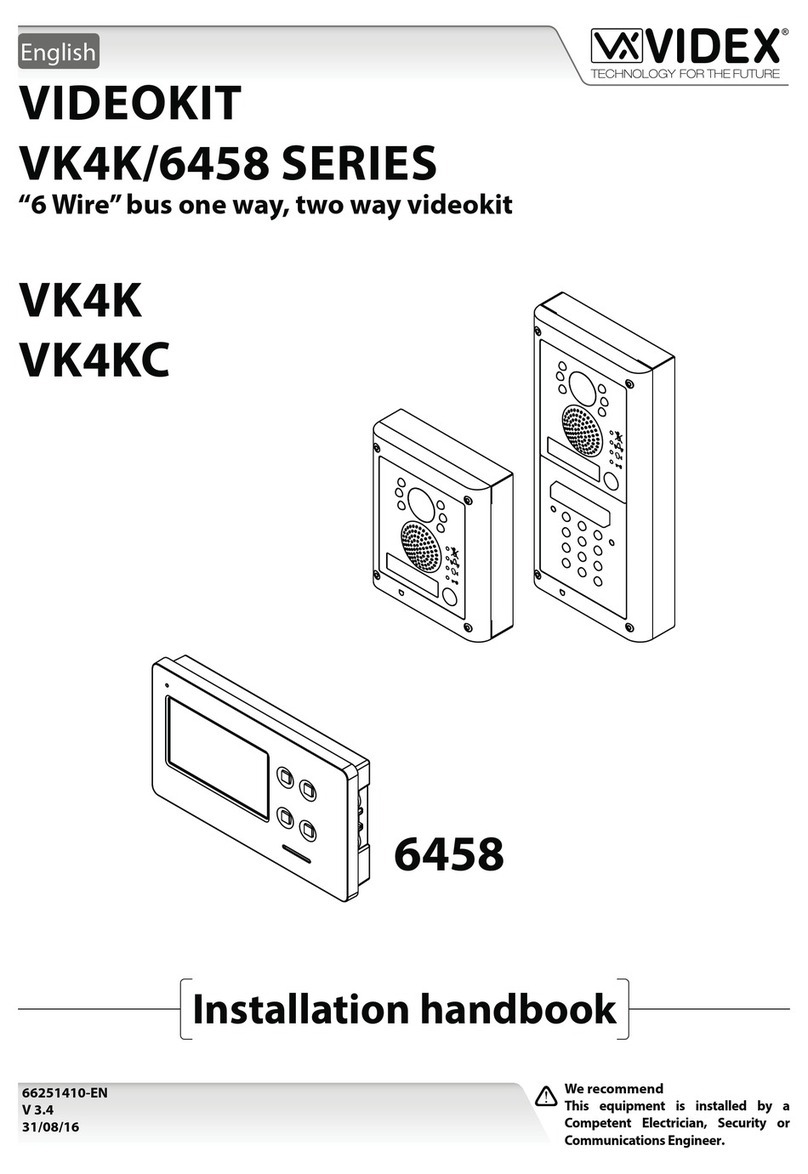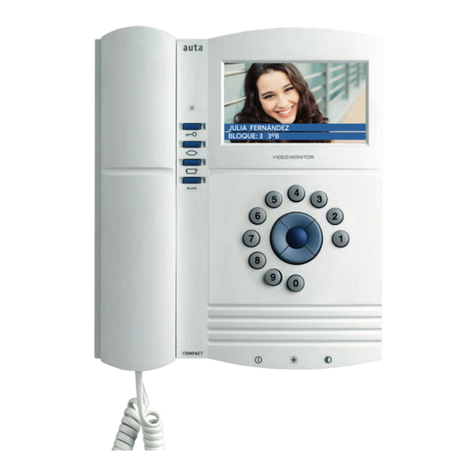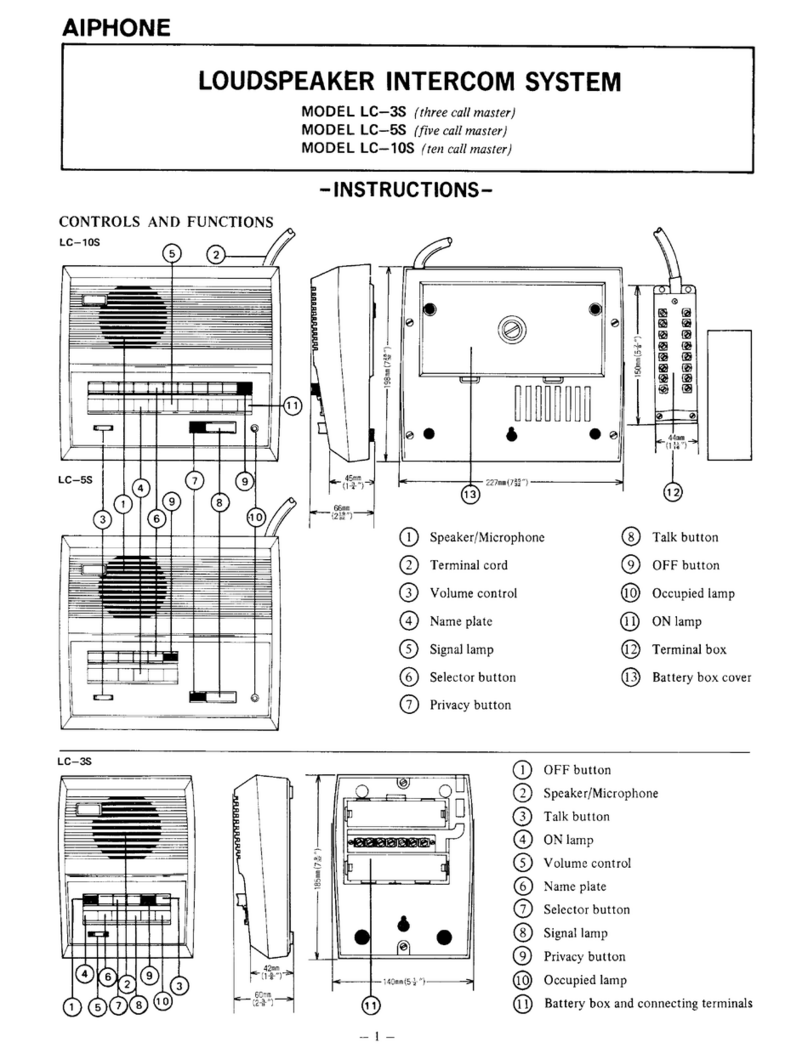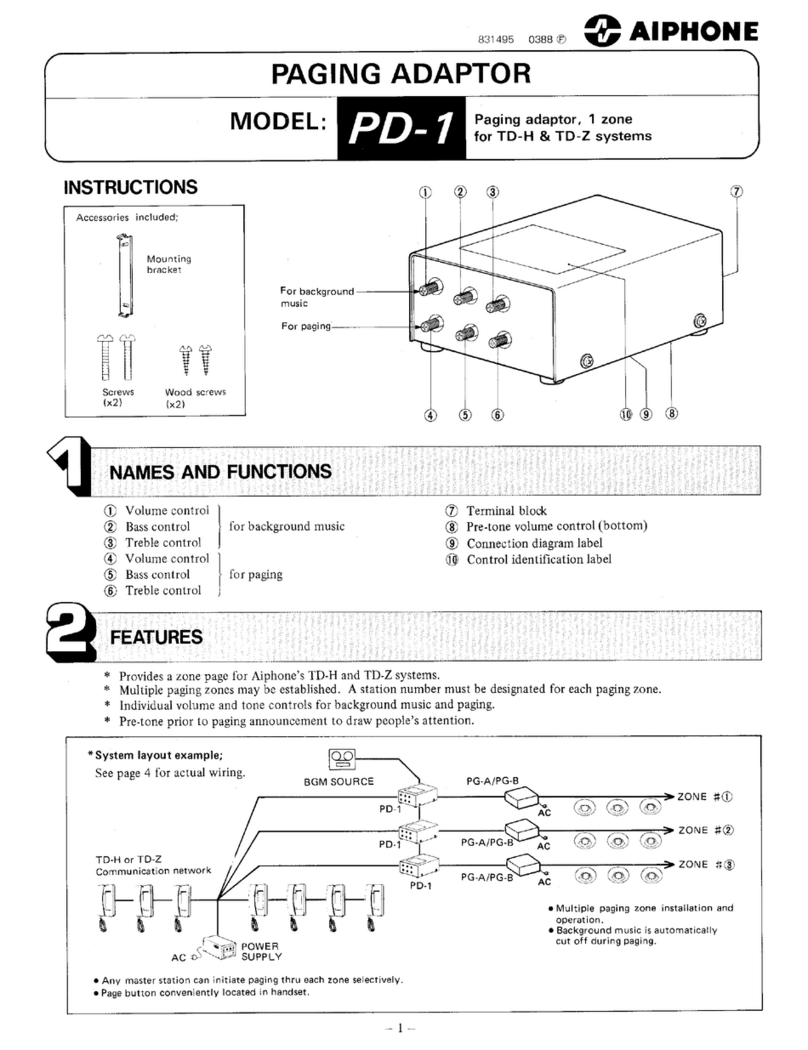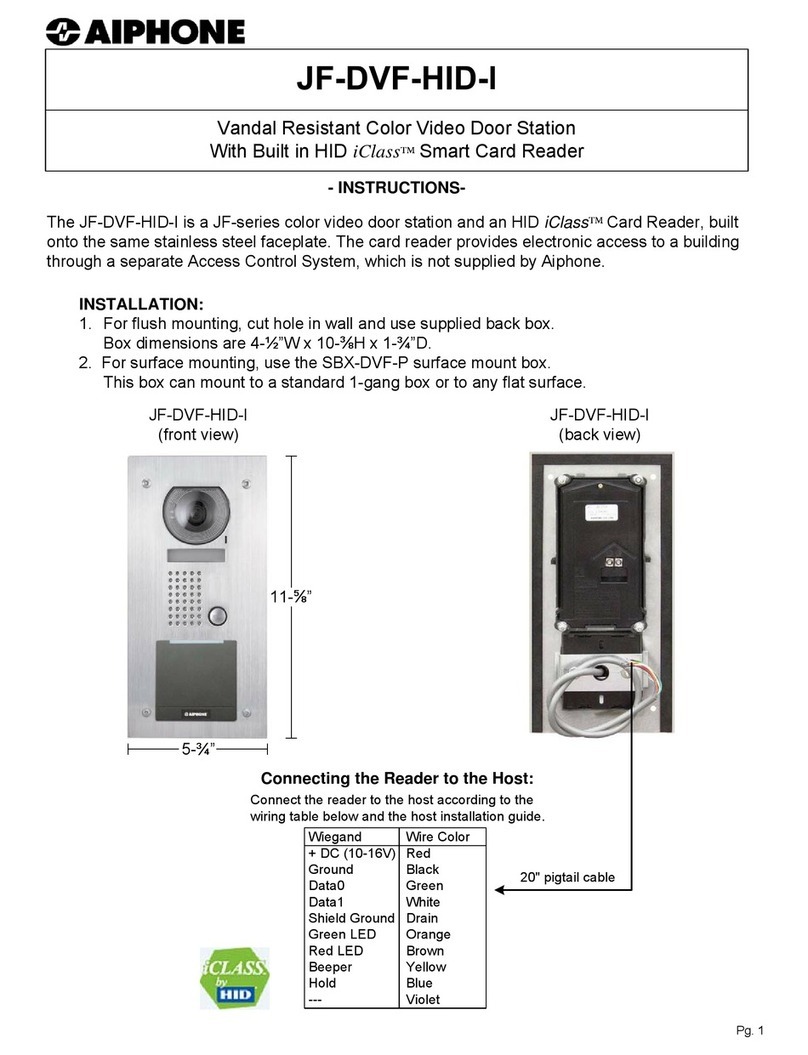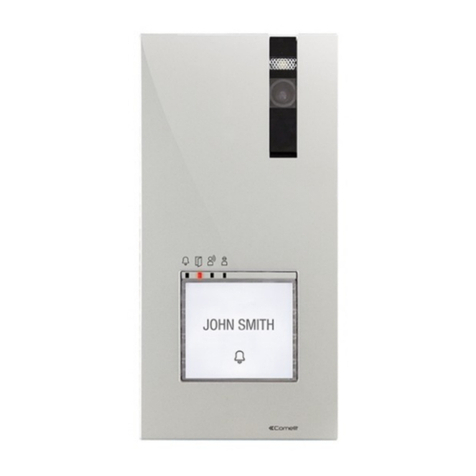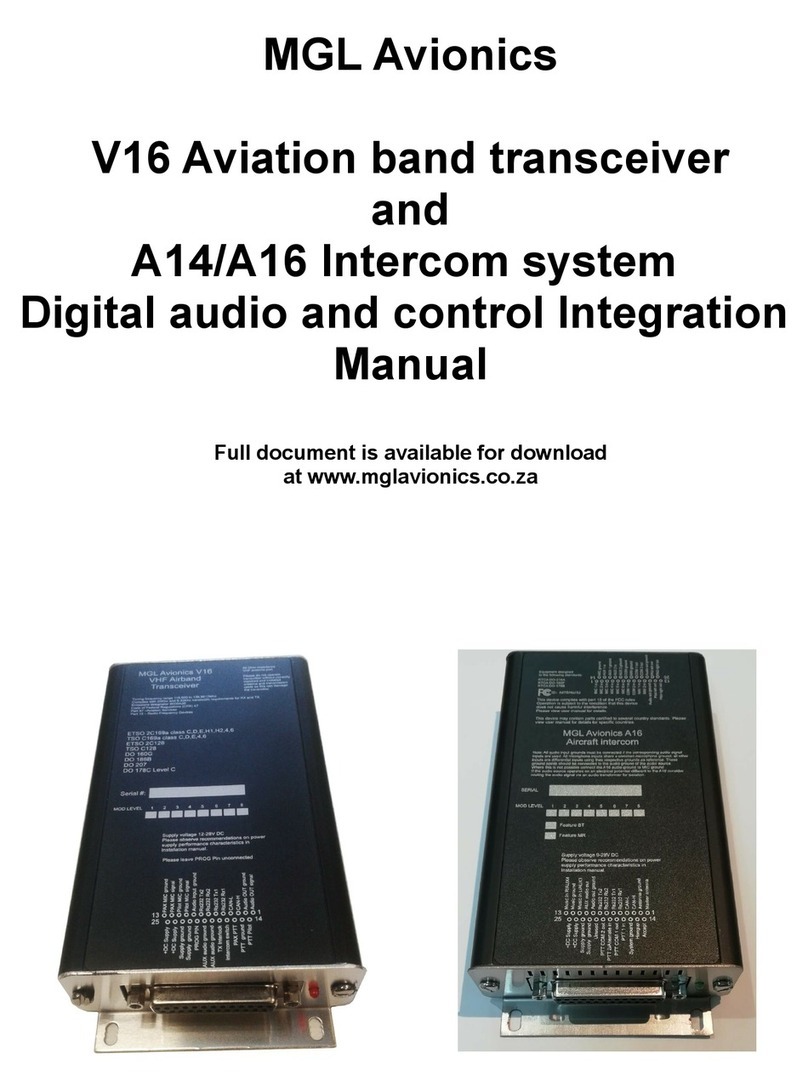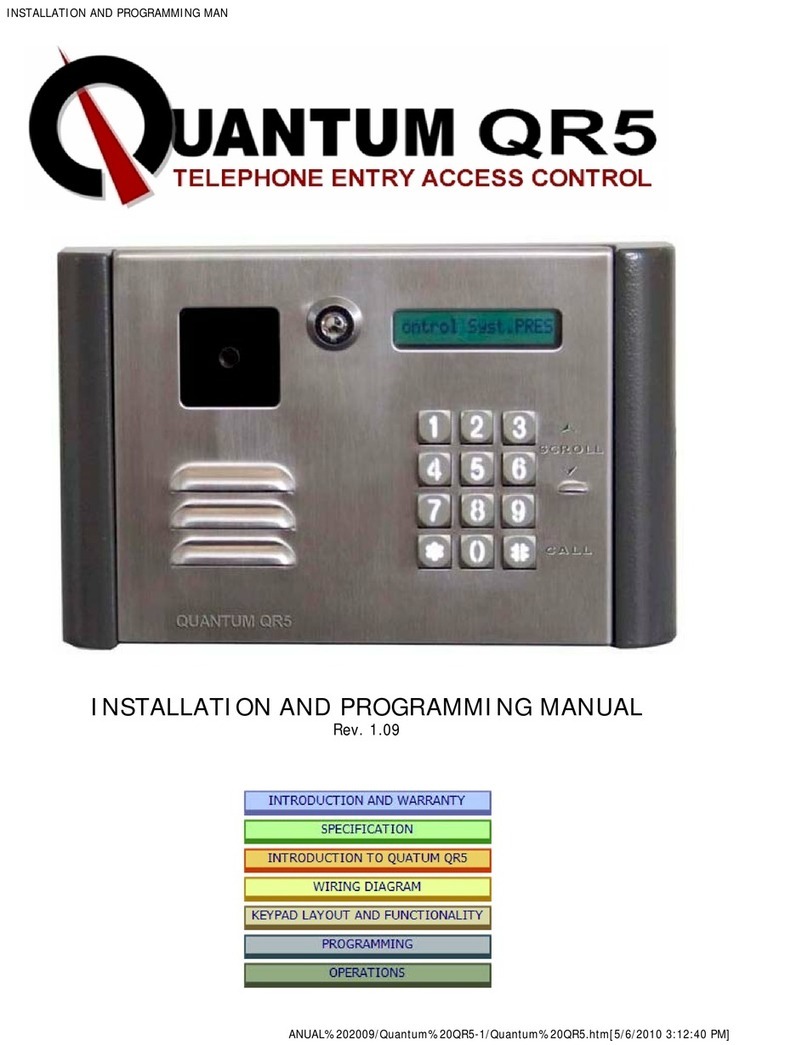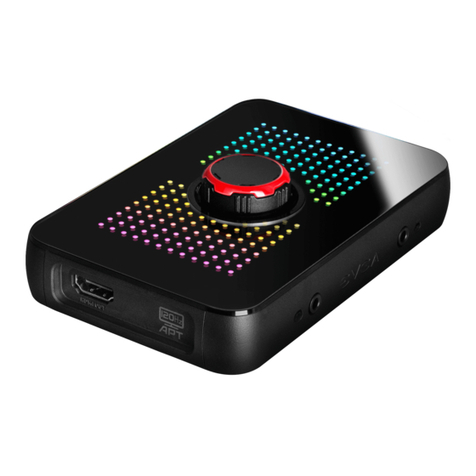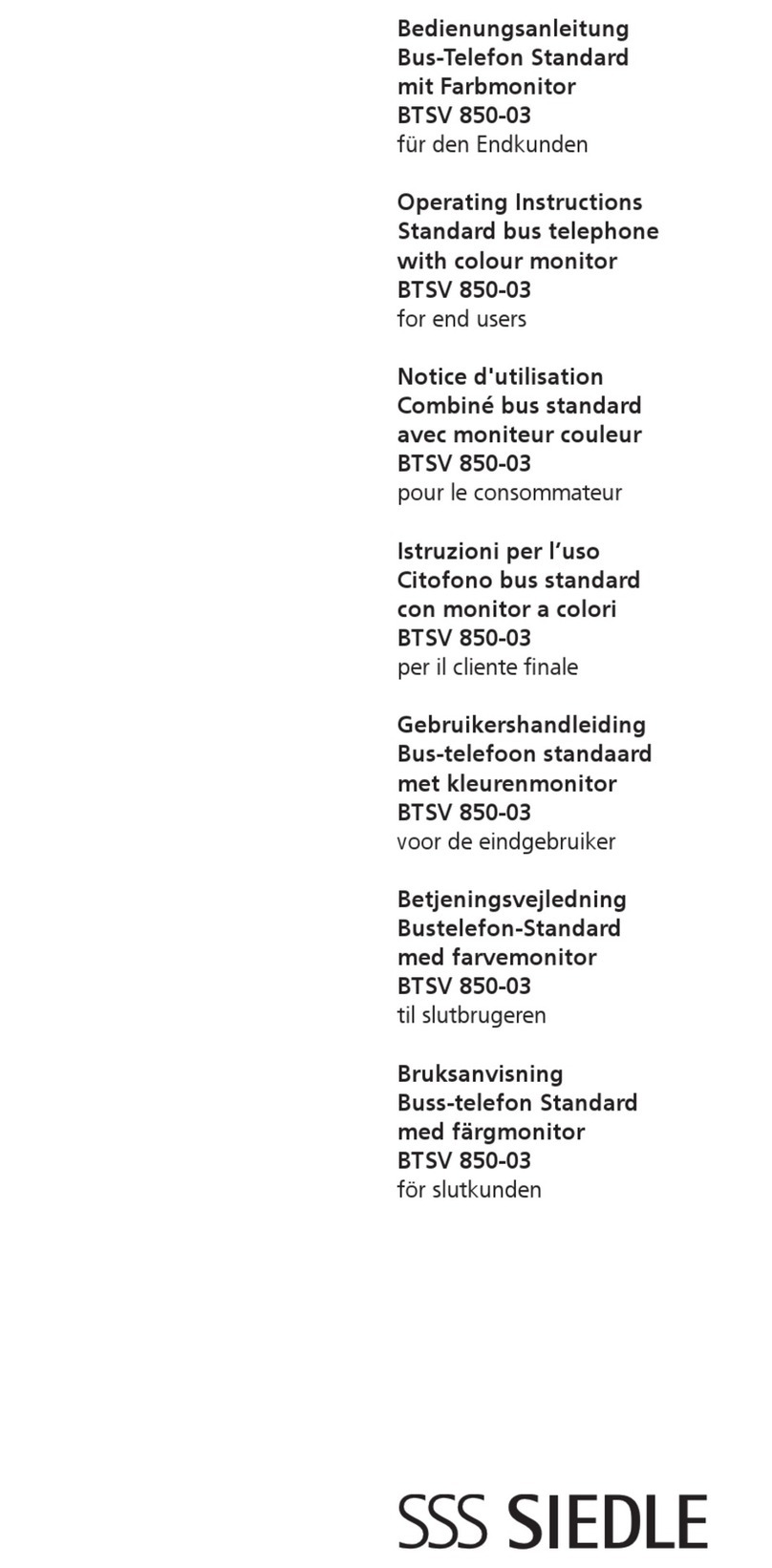
66251410-EN - V 3.4 - 31/08/16
6
VK4K/6458 Series “6 wire Bus” videokit
VK4K/6458 Series - Installation handbook
In case of system failure, try the following preliminary checks:
• Check that the cables are connected as shown in the installation diagram and that the cables are rmly xed into the relevant terminals;
• Check that the mains voltage is available on terminals 230Vac (or 127Vac) and 0 of the power transformer Art.850K;
• Check the 24Vac voltage output of the power transformer Art.850K. If this voltage is not available it could be the 1,6A fuse, in this case
remove the mains voltage, remove possible short-circuits or overload sources then replace the fuse with an equal or equivalent one.
• Check that the voltage between the terminals“+” and “-” of the speaker unit is between 16 and 20Vdc.
If the problem persists try the tests in the following table or contact technical support.
SYMPTOM CAUSE SOLUTION
The door station is not able to call the ex-
tension (the bell LED is switched on for 2
seconds):
• Wrong connection between door sta-
tion and the videophone
• Cable size too small.
• Programmed videophone address in-
correct.
• You have changed the videophone ad-
dress without power down the system.
• Check the 6 common wire connections
especially wire“1”(speech line/data).
• Increase cable size or double up using
two wires for each connection.
• Check videophone address on dip-swi-
tches.
• Power down the system then power up
again to detect the new videophone ad-
dress.
External call works but when answered
the communication fails:
• Cable size too small. • Increase cable size or double up using
two wires for each signal.
During the conversation it is not possible
to open the door:
• Cable size too small. • Increase cable size or double up using
two wires for each signal.
During the conversation it is not possible
to open the door but the key LED on the
door station switches on for the program-
med time:
• Incorrect position of J2 jumper.
• Electric lock wires unconnected or in short.
• Wrong electric lock type.
• Check J2 position on the door station.
• Check connection.
• Check that the electric lock type (ac or dc)
is suitable for the J2 position chosen.
Speech only from outside to inside: • Wire “2” broken or in short. • Check connection of wire“2”.
Low volume of speech: • Volume trimmers of door station require
adjustment.
• Adjust the trimmers until the required
volume is reached.
Noise over the speech line during the con-
versation:
• The 6 common wires are cabled to-
gether with 230 or 380Vac power lines.
• The 6 common wires are cabled to-
gether with 24Vac videophone power
supply wires.
• Separate the 6 common wires from the
high voltages cables.
• Separate the 6 common wires from the
two 24Vac wires or cable them together
only for a short distance.
Camera recall service does not work: • Camera recall button pressed for a num-
ber of times dierent from the ID of the
door station to be switched on.
• Check the ID (1..4) of the door station to be
recalled and press the camera recall but-
ton as many time as the ID value.
Intercommunicating call does not work: • ”Key” button pressed for a number of
times dierent from the videophone ad-
dress value.
• Check the address of the videophone
you are calling and try again.
The video shown on the monitor is of a bad
quality and the image is distorted or double
• V1,V2 signals unconnected, reversed or
shorted.
• The switches of the two way dip-switch
are not both in ON position.
• V1,V2 of the last Art. 316N (if present)
not closed with 75 Ohm resistor.
• Check that the wires are not broken or
shorted.
• Set both switches to the ON position.
• Use 2x 75 Ohm resistors to connect V1
& V2 to 0V.
Local call does not work: • Wrong connection or call button broken. • Check connection or replace the button.
Troubleshooting guide

